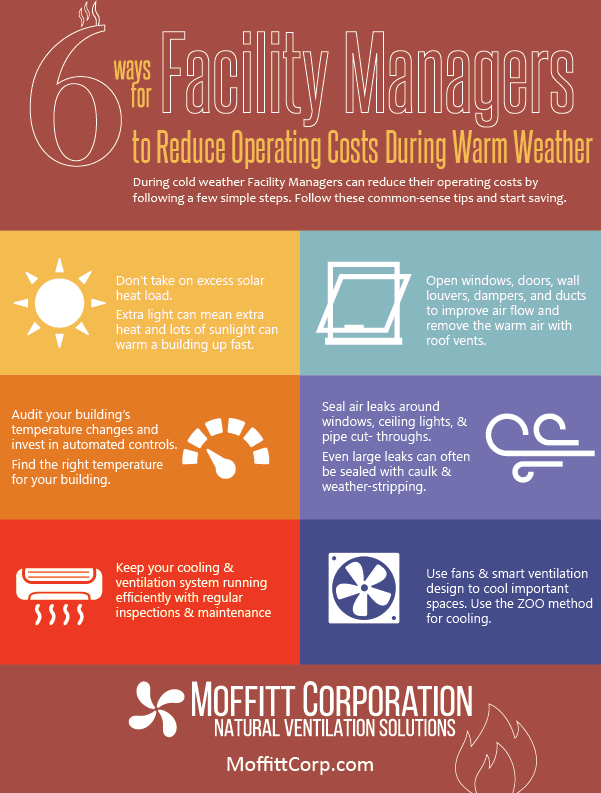Warm Weather Operating Costs – 6 Ways To Cut Back
There are dozens of ways to save on warm weather operating costs in an industrial building. Read on to see 6 Ways for Facility Managers to Reduce Operating Costs During Warm Weather. Start with these simple tricks first and you will see at least some cost savings in just a few weeks. Once you have started to save money, you can then reinvest that money back into the business, whether that be on more innovative technology or marketing materials.
Facility Managers are always on the lookout for how to improve efficiency and lower costs. At the same time, they have all seen and heard every single pitch about how they can “save money”. They know when something is for real and when it’s a waste of time. Since we work directly with superintendents, plant managers, and maintenance teams every day, we know their concerns. That’s why we’ve put together this list of straightforward ways to cut down on warm weather operating costs.
6 Things Every Plant Manager Should Know

This infographic is based on a list to prevent energy loss provided by the U.S. Department of Energy. Plant owners and facility managers can use these tips to help them reduce operating costs in their facilities. Most crews can fix these problems in a couple of hours, while others will take just a few days.
6 Ways for Facility Managers to Reduce Warm Weather Operating Costs
- Don’t take on excess solar heat load. Extra light can mean extra heat, and lots of sunlight can warm a building up fast. – Simple blinds or window shades can keep a space from getting too warm. This may be obvious but remember, ever extra degree that the sun warms the building is another degree that you need to cool.
- Open windows, louvers, dampers, and ducts to improve air flow and remove the warm air with roof vents. – Sometimes people close vents to keep pests out or reduce noise. An insect screen or a sound damper can be installed to solve those problems.
- Audit your building’s temperature changes and invest in automated controls. Find the right temperature for your building. –
- Seal air leaks around windows, ceiling lights, and pipe cut throughs. Even large leaks can be sealed with caulk and weather-stripping. – Even a small draft can impede on a building’s airflow. Cut down on air leaks to ensure air is going where you want it to.
- Keep your cooling & ventilation system running efficiently with regular inspections & maintenance. – Exhaust fans aren’t doing much if they’re broken. Replace broken fans as soon as you can to avoid overtaxing the remaining fans. This can lead to a chain reaction of failure. If fan replacement costs are adding up, investigate alternatives like the GreenRoo.
- Use fans & smart ventilation design to cool important spaces. Use the ZOO method for cooling. – ZOO stands for Zone of Occupancy. It means only cooling areas that need cooling. Intake air fans with duct drops, Wall fans, and DeltaStream evaporative coolers are all effective ways to provide cooling in specific areas.
For tips on how to save energy during chilly weather, see our companion article, 6 Ways for Facility Managers to Reduce Cold Weather Operating Costs.
